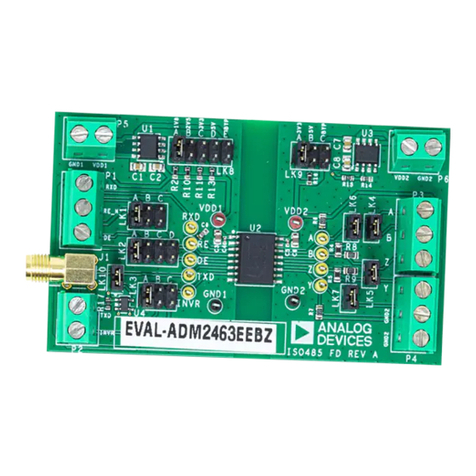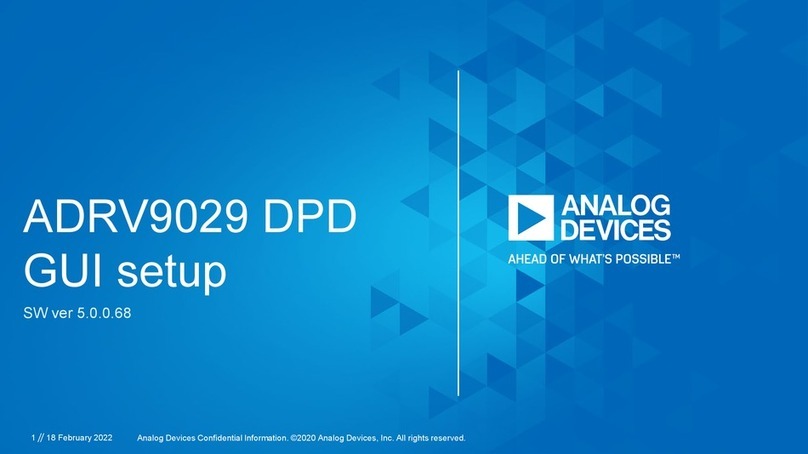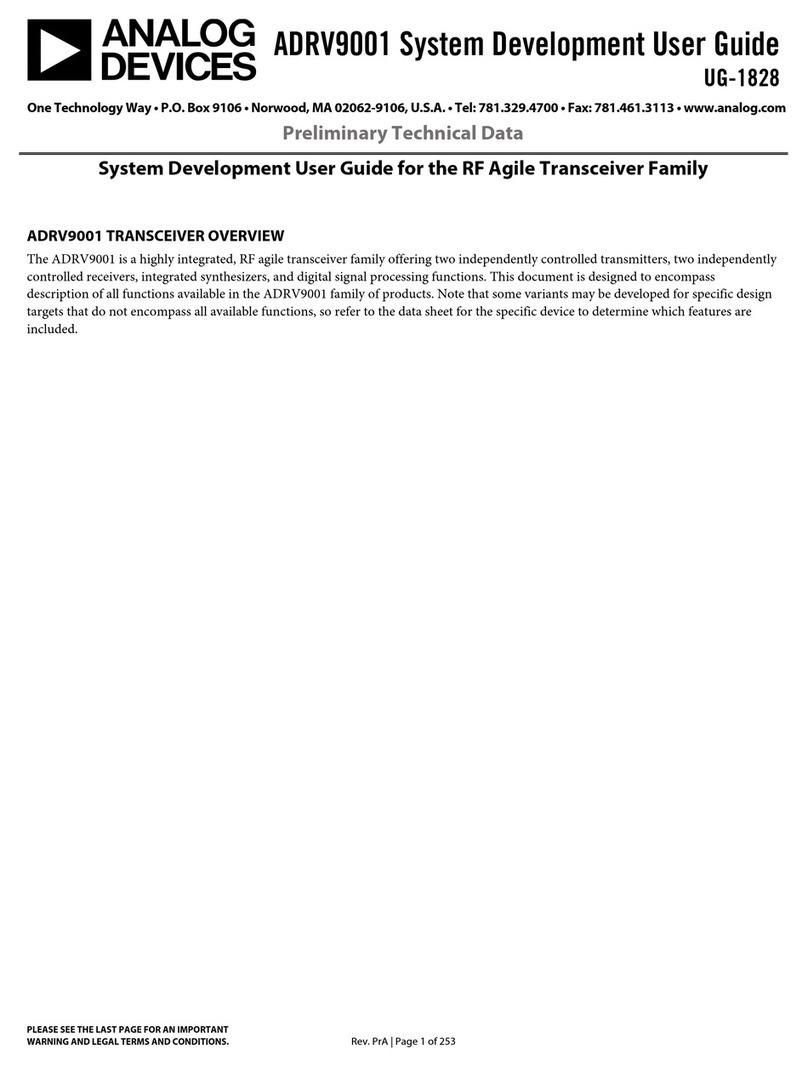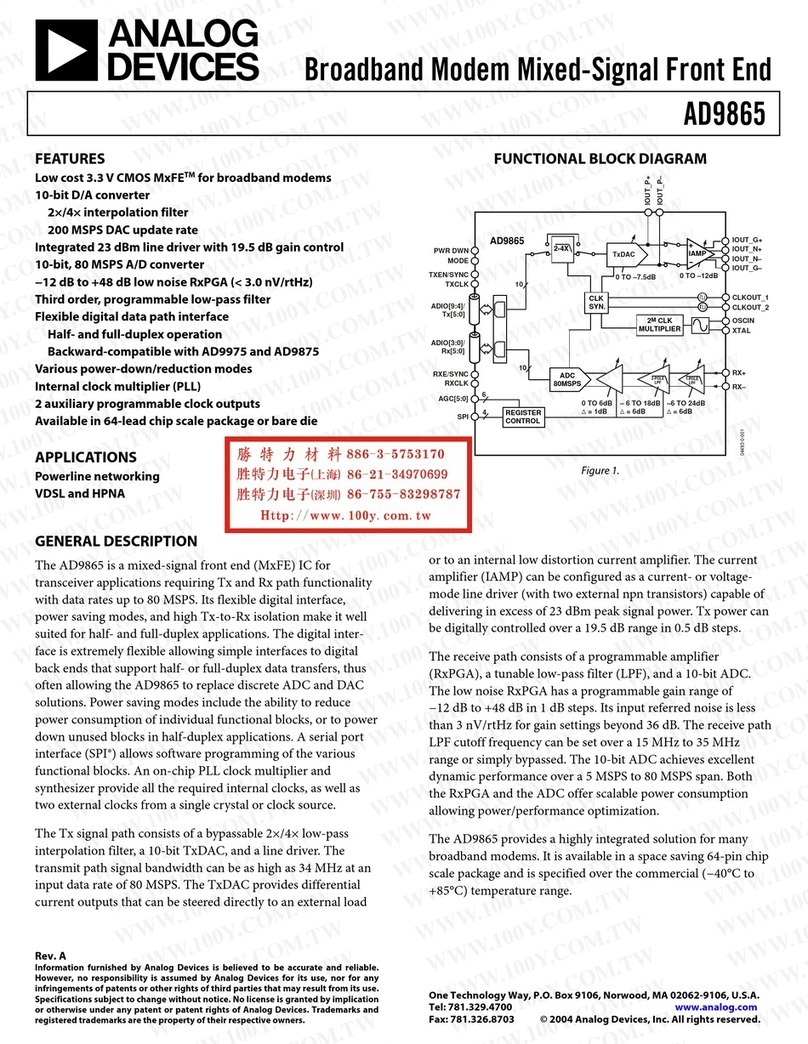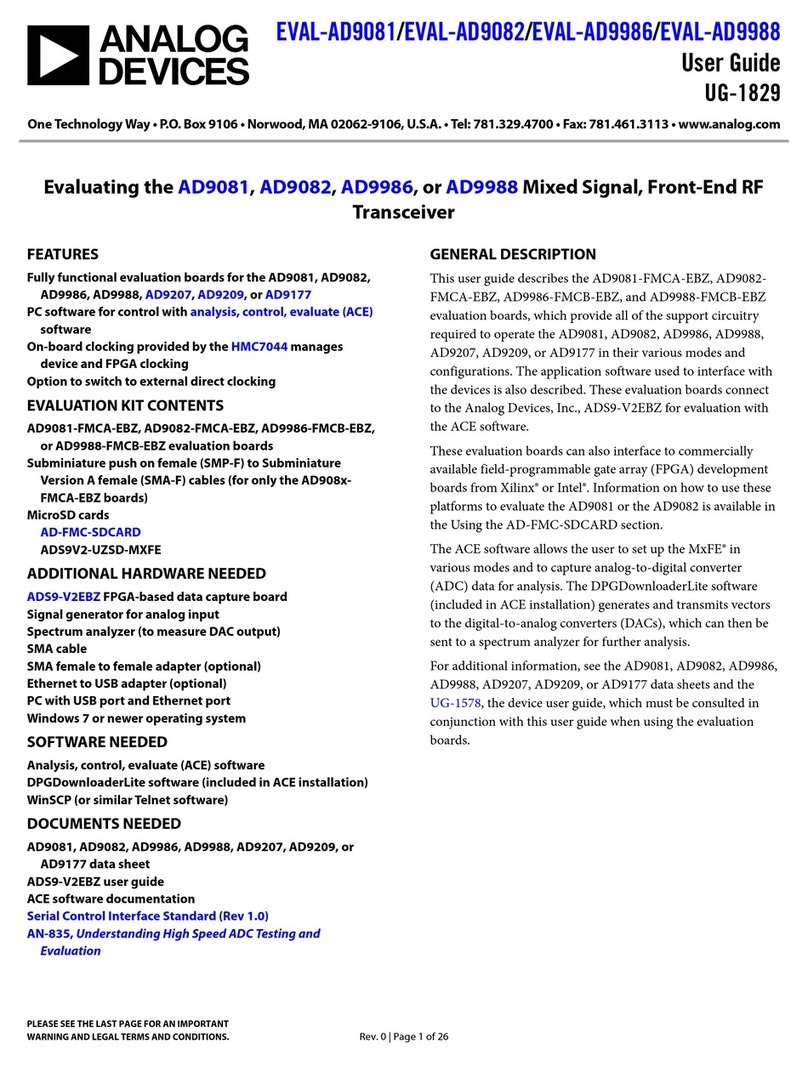
Application Note AN-1258
Rev. 0 | Page 5 of 12
INTERNAL TONE SETUP
The internal tone is generated from integer multiples of the
DEMOD_CLK. The power of the tone varies with the reference
crystal and the RF band used. Therefore, some evaluation is
required to derive the optimum settings for generating the tone.
The aim of the evaluation is to generate a tone strong enough to
provide a significant swing in RSSI when the sweep of gain and
phase is carried out.
Table 1outlines the register settings to adjust to generate
the tone. This section of the application note describes the
mechanism and method for generating the tone.
=
__
=__ ×
where N= 1, 2, 3, and so on, or
=
_
2×
when IR CAL SOURCE ÷ 2 = ON.
The ADF7021 family of transceivers should be programmed to
the following:
7021 = +200 kHz
It is recommended to keep the DEMOD_CLK_DIVIDE value
low to produce stronger tones. Odd harmonics also generate a
stronger tone (where N= 1, 3, 5, and so on).
For example, consider the following:
RF Band = 868 MHz
XTAL = 19.68 MHz
DEMOD_CLK_DIVIDE =2
IR_CAL_SOURCE ÷ 2=ON
=19.68 MHz
2= 9.84 MHz
=9.84 MHz
2= 4.92 MHz
when N= 177 and Internal RF Tone = 870.84 MHz.
Program the transceiver to
870.84 MHz +200 kHz =871.04 MHz
Although the internal tone is not produced at precisely
868 MHz, results taken at 870.84 MHz are a good estimate of
the optimum calibration values at 868 MHz. Always select the
odd harmonic which is closest to the center of the operating
band.
Having defined the registers as outlined in Table 1, follow the
steps outlined in Figure 4 to set up the internal tone. At the
steps in the flowchart labeled TONE PRESENT?, execute a
readback of the RSSI. Figure 5 gives more detail on this step.
When an RSSI readback is executed, a value between 0 to 80
is read back from the ADC. It is not necessary to convert this
to an RSSI value in decibels referenced to 1 milliwatt (dBm)
although the methods for this are explained in the product
data sheet.
An ADC value of 0 can be considered a weak tone whereas 80 is
a strong tone.
As highlighted in the flowchart, when deciding whether a
suitable tone has been generated, the RSSI should be read back
with the device programmed to extreme ends of the I/Q range.
This accounts for the possibility that the RSSI minimum lies
near the current I/Q setting, which could mislead the user into
concluding that a weak tone is present.
It is recommended to readback the RSSI value several times
and calculate an average. The flowchart specifies 10 readings,
but this can be reduced, if necessary, with the trade-off that
accuracy near the minimum will be reduced.
Ideally, uncalibrated readback values are in the range of 60 to
80. This ensures a sufficient swing in values when searching for
the minimum RSSI. If successive RSSI readbacks are yielding
inconsistent results varying between 0 and 30, it is probable
that there is only noise present on the receiver. There are steps
outlined on the right side of the flowchart in Figure 4 to correct
this situation and increase the power of the tone.






